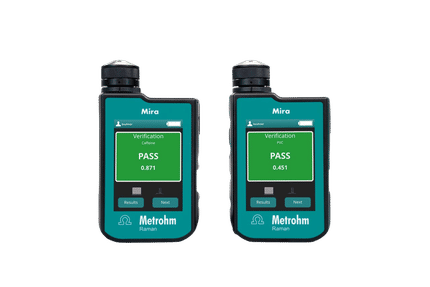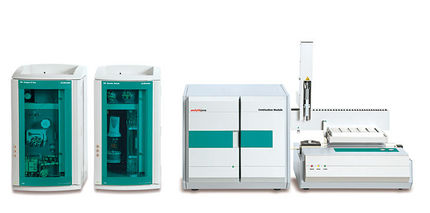N-Acetylglutamate synthase deficiency
|
|
This article needs additional citations for verification.
Please help improve this article by adding reliable references. Unsourced material may be challenged and removed. (January 2008) |
N-Acetylglutamate synthase deficiency
Classification & external resources
|
|
| N-Acetylglutamic acid
|
| OMIM
| 237310
|
| DiseasesDB
| 29823
|
| eMedicine
| ped/10
|
N-Acetylglutamate synthase deficiency is an autosomal recessive urea cycle disorder.
Mechanism
Carbamoyl phosphate synthase 1 is an enzyme found in mitochondrial matrix and it catalyzes the very first reaction of the Urea cycle, in which carbamoyl phosphate is produced.
Carbamoyl Phosphate Synthase 1, abbreviated as CPS1, is activated by its natural activator N-Acetyl glutamate, which in turn is synthesized from acetyl-CoA and glutamic acid in the reaction catalyzed by N-Acetyl glutamate synthase, commonly called NAGS. N-Acetyl Glutamate is required for the Urea cycle to take place.
Deficiency in N-Acetyl Glutamate Synthase or a genetic mutation in the gene coding for the enzyme, will lead to urea cycle failure in which ammonia is not converted to urea, but rather accumulated in blood leading to the condition called Type I Hyperammonemia. This is a severe neonatal disorder with fatal consequences, if not detected immediately upon birth.
Genetics
The chromosome found to be carrying the gene encoding for N-Acetyl Glutamate synthetase is chromosome 17q (q stands for longer arm of the chromosome) in humans and chromosome 11 in mice. In both organisms, the chromosome consists of seven exons and six introns and non-coding sequence.
The cause for this disorder is a single base deletion that led to frameshift mutation, and thus the error in gene's coding for this specific enzyme.
Presentation and treatment
The symptoms are visible within the first week of life and if not detected and diagnosed correctly immediately consequences are fatal.
Although there is currently no cure, treatment includes injections of structurally similar compound, N-Carbamoyl phosphate, an analogue of N-Acetyl Glutamate. Scientists that discovered this compound theorized that injected N-Carbamoyl Phosphate could trick the organism into substituting N-Carbamoyl Phosphate for N-Acetyl Glutamate and thus activate much required CPS1 enzyme, the catalyst in the very first reaction of the Urea Cycle. This treatment mitigates the intensity of the disorder.
If symptoms are detected early enough and the patient is injected with this compound, levels of severe mental retardation can be slightly lessened, but brain damage is irreversible.
Early symptoms include lethargy, vomiting, and deep coma.
See also
References
- Hall L, Metzenberg R, Cohen P (1958). "Isolation and characterization of a naturally occurring cofactor of carbamyl phosphate biosynthesis". J Biol Chem 230 (2): 1013-21. PMID 13525417.
- Caldovic L, Morizono H, Panglao M, Cheng S, Packman S, Tuchman M (2003). "Null mutations in the N-acetylglutamate synthase gene associated with acute neonatal disease and hyperammonemia". Hum Genet 112 (4): 364-8. PMID 12594532.
| Metabolic pathology / Inborn error of metabolism (E70-90, 270-279) |
|---|
| Amino acid | Aromatic (Phenylketonuria, Alkaptonuria, Ochronosis, Tyrosinemia, Albinism, Histidinemia) - Organic acidemias (Maple syrup urine disease, Propionic acidemia, Methylmalonic acidemia, Isovaleric acidemia, 3-Methylcrotonyl-CoA carboxylase deficiency) - Transport (Cystinuria, Cystinosis, Hartnup disease, Fanconi syndrome, Oculocerebrorenal syndrome) - Sulfur (Homocystinuria, Cystathioninuria) - Urea cycle disorder (N-Acetylglutamate synthase deficiency, Carbamoyl phosphate synthetase I deficiency, Ornithine transcarbamylase deficiency, Citrullinemia, Argininosuccinic aciduria, Hyperammonemia) - Glutaric acidemia type 1 - Hyperprolinemia - Sarcosinemia |
|---|
| Carbohydrate | Lactose intolerance - Glycogen storage disease (type I, type II, type III, type IV, type V, type VI, type VII) - fructose metabolism (Fructose intolerance, Fructose bisphosphatase deficiency, Essential fructosuria) - galactose metabolism (Galactosemia, Galactose-1-phosphate uridylyltransferase galactosemia, Galactokinase deficiency) - other intestinal carbohydrate absorption (Glucose-galactose malabsorption, Sucrose intolerance) - pyruvate metabolism and gluconeogenesis (PCD, PDHA) -
Pentosuria - Renal glycosuria |
|---|
| Lipid storage | Sphingolipidoses/Gangliosidoses: GM2 gangliosidoses (Sandhoff disease, Tay-Sachs disease) - GM1 gangliosidoses - Mucolipidosis type IV - Gaucher's disease - Niemann-Pick disease - Farber disease - Fabry's disease - Metachromatic leukodystrophy - Krabbe disease
Neuronal ceroid lipofuscinosis (Batten disease) - Cerebrotendineous xanthomatosis - Cholesteryl ester storage disease (Wolman disease) |
|---|
| Fatty acid metabolism | Lipoprotein/lipidemias: Hyperlipidemia - Hypercholesterolemia - Familial hypercholesterolemia - Xanthoma - Combined hyperlipidemia - Lecithin cholesterol acyltransferase deficiency - Tangier disease - Abetalipoproteinemia
Fatty acid: Adrenoleukodystrophy - Acyl-coA dehydrogenase (Short-chain, Medium-chain, Long-chain 3-hydroxy, Very long-chain) - Carnitine (Primary, I, II) |
|---|
| Mineral | Cu Wilson's disease/Menkes disease - Fe Haemochromatosis - Zn Acrodermatitis enteropathica - PO43− Hypophosphatemia/Hypophosphatasia - Mg2+ Hypermagnesemia/Hypomagnesemia - Ca2+ Hypercalcaemia/Hypocalcaemia/Disorders of calcium metabolism |
|---|
Fluid, electrolyte
and acid-base balance | Electrolyte disturbance - Na+ Hypernatremia/Hyponatremia - Acidosis (Metabolic, Respiratory, Lactic) - Alkalosis (Metabolic, Respiratory) - Mixed disorder of acid-base balance - H2O Dehydration/Hypervolemia - K+ Hypokalemia/Hyperkalemia - Cl− Hyperchloremia/Hypochloremia |
|---|
| Purine and pyrimidine | Hyperuricemia - Lesch-Nyhan syndrome - Xanthinuria |
|---|
| Porphyrin | Acute intermittent, Gunther's, Cutanea tarda, Erythropoietic, Hepatoerythropoietic, Hereditary copro-, Variegate |
|---|
| Bilirubin | Unconjugated (Lucey-Driscoll syndrome, Gilbert's syndrome, Crigler-Najjar syndrome) - Conjugated (Dubin-Johnson syndrome, Rotor syndrome) |
|---|
| Glycosaminoglycan | Mucopolysaccharidosis - 1:Hurler/Hunter - 3:Sanfilippo - 4:Morquio - 6:Maroteaux-Lamy - 7:Sly |
|---|
| Glycoprotein | Mucolipidosis - I-cell disease - Pseudo-Hurler polydystrophy - Aspartylglucosaminuria - Fucosidosis - Alpha-mannosidosis - Sialidosis |
|---|
| Other | Alpha 1-antitrypsin deficiency - Cystic fibrosis - Amyloidosis (Familial Mediterranean fever) - Acatalasia |
|---|
|







